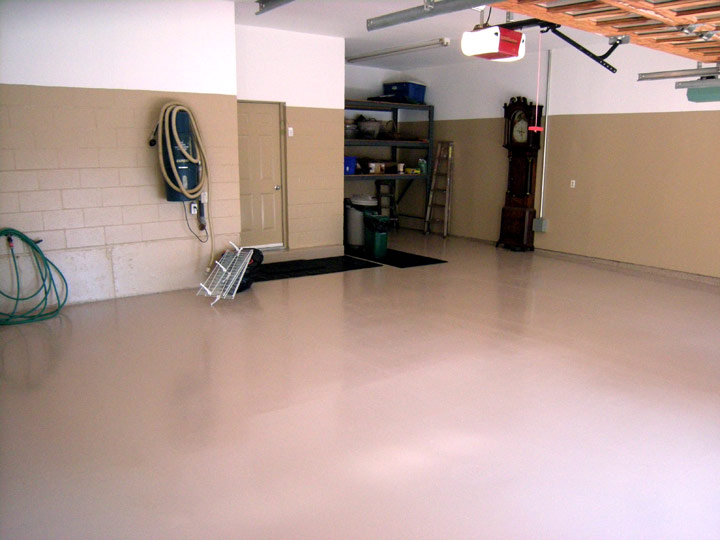EPOXY COATINGS
Proper floor preparation is the most important part of the epoxy process. At TTM Finishes Inc we have two accepted methods for concrete floor preparation, shot blasting and diamond grinding. Diamond grinding is regarded as the best process however it is slightly costlier when calculated on a per square foot basis over a large floor area such as a factory.

Diamond grinding is the preferred method at TTM Finishes Inc. Diamond grinding has the ability to remove a larger variety of materials than shotblasting such as carpet glue, vinyl tile adhesive and other epoxy coatings as well as oils and dirt. Often shotblasting is not effective on adhesives and epoxies due to shot force absorption by the material your trying to remove.
Whether a large factory floor, an office, retail store or your garage or basement, concrete surface preparation is critical to a successful installation.
Once the surface is ground and cracks and holes are filled, the floor is vacuumed and cleaned.

Once cleaning is finished, epoxy application can begin. We normally apply epoxy in 2 coats. This helps insures good bonding and makes sure that the epoxy is nice and strong. Normally 2 coats of epoxy are stronger than one thicker coat.
Epoxy thickness is measured in mils such as 10, 15 or 20 mils. This is thousanths of a inch, not millimeters. A good 2 coat applicaiton of epoxy is normally in the 15 - 20 mil thickness range after completion.
Industrial solids epoxies for floors are typically mixed in buckets and poured in a ribbon on the floor. That ribbon is then spread using a squeegee and then back rolled and cross rolled using a 1/4" roller.
Newer water based epoxies and other specialized epoxy materials are applied using different methods.
Some epoxies made for machine coatings are applied by sprayer. Other materials are applied in a fashion similar to paint coatings. Each material has its own special niche application and procedures for success.
For instance the epoxy material we would recommend for use on your garage floor is completely different fromt he epoxy we might recommend for your basement floor. The applicaiton techniques, number of coats and the finish type are completely different. Most people and contractors tend to think that there are only 1 or 2 types of epoxy but this is not the case. There are many different types of epoxies for different applicaitons. They all have different characteristics and different surface prep and applicaiton requirements.

If your contractor is not aware of this fact. That's probably an indicator that the contractor your using is not very knowledgeable about epoxies. You may want to rethink your decision about the contractor your hiring or you could end up as an episode of "Holmes on Homes" with your hands in the air going "I don't know what happened".
Feel free to contact us if you have any questions about your own projects at TTM Finishes Inc.